Welcome to this month’s update which is something of a mixed bag of reporting on a great event that we recently attended, a new sponsor coming on board with our venture, yet some degree of frustration and moments of burying my head in my hands.
In the first instance it is frustrating to see that our good friend Dave Warby and his team in Australia remain unable to undertake further testing of their jet hydroplane Spirit of Australia II, due to a pandemic related ‘Stay At Home Order’ being extended. Hopefully the situation there will improve soon sufficient to allow the restriction to be lifted and they can get back out on the water.
Back here on a more positive note we are very pleased to announce that a marine carpeting company called Below Decks are kindly coming all the way up from Dorset at the beginning of August to supply and fit their product to the bunks of our trailer for Longbow which is very kind of them. Accordingly their company details may now be found within the sponsors section of our website.
With regards to progress with Longbow I am a little frustrated that I have not yet managed to get the colour coats of paint onto the underside of her hull. You will simply have to take my word for it that it is not for lack of effort on my part, with sanding and then applying more primer by roller from our terrific sponsor HMG paints and repeating the process again and again.
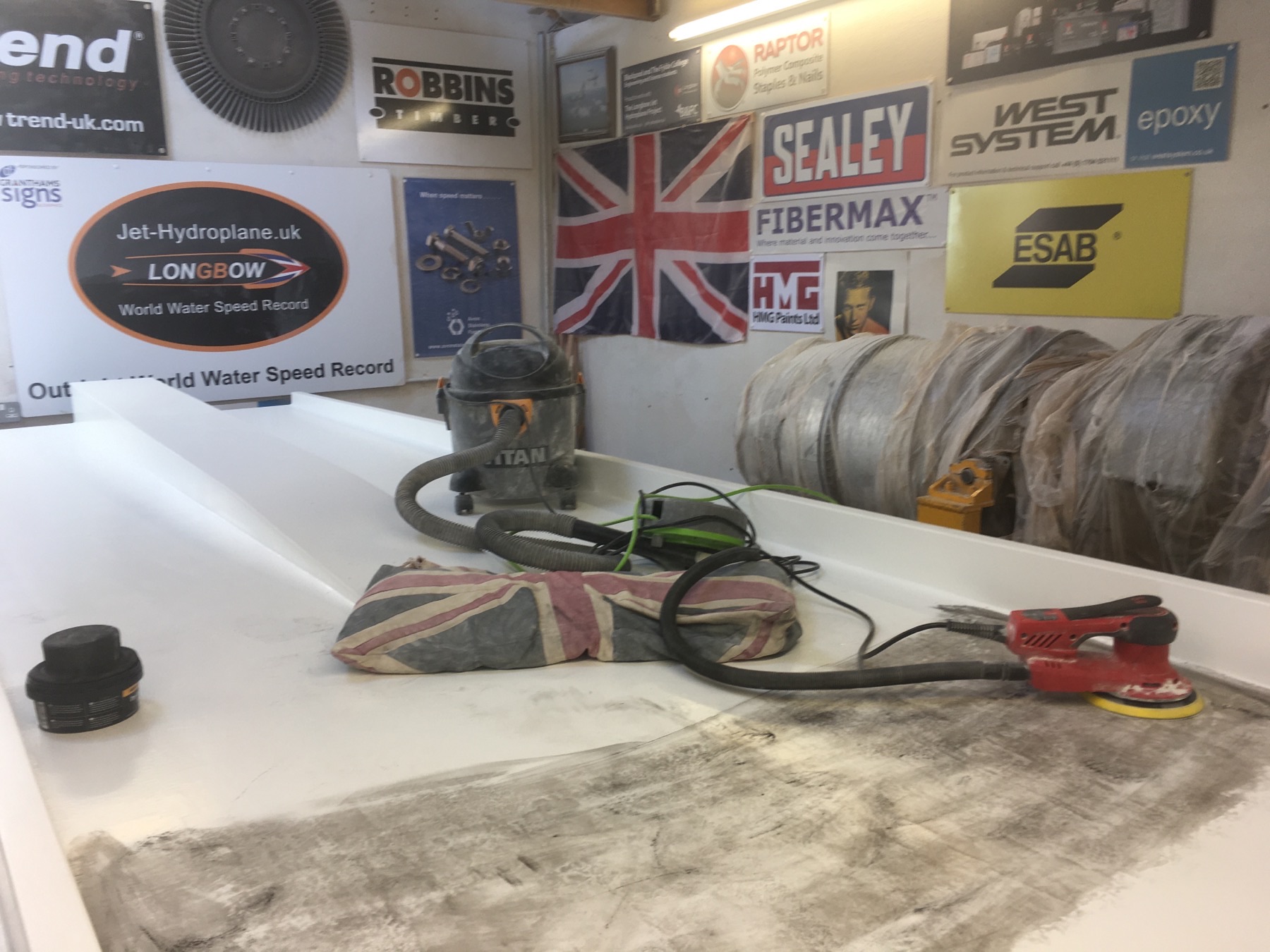
At the end of the day these are the critical running surfaces of the craft and hence I trust you will agree there is no point rushing to apply colour coats of paint just to get them on for this diary update. Better to just acknowledge it is a laborious task, take my time and accept it takes as long as it takes to reach a point that I am happy with it before moving on to apply the colour coats.
This month a photo that I had taken on 24th November 2011 was posted on social media without my prior permission by a gas turbine enthusiast. The photo showed a section of distorted air intake metalwork to the jet hydroplane K777, a craft generally accepted by the public to be a loose replica of, or tribute to the original and iconic Bluebird K7. A photo of the craft is shown below with a Folland Gnat aircraft directly above noting both boat and plane are powered by the same Bristol Siddeley Orpheus jet engine:
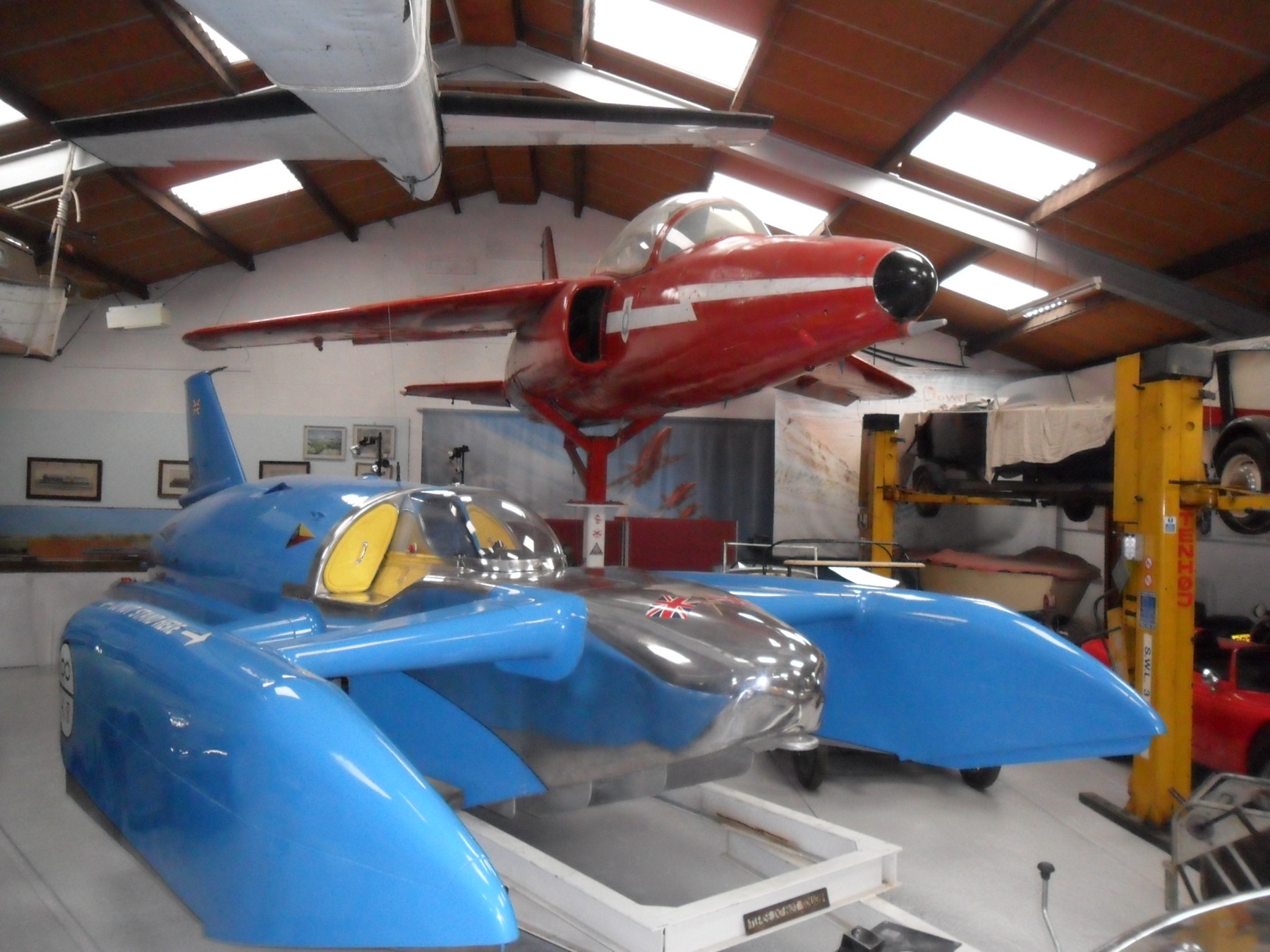
No harm was done and upon bringing the matter to their attention they kindly posted an apology to myself for the minor oversight. Associated with the social media photo post were two statements that I do however feel prudent to comment upon for clarification as follows.
In the first instance it was suggested on that social media site that K777 had a constrained intake (to her gas turbine engine) due to the incorporation of a safety cell cockpit in trying to keep to K7 (Bluebird) dimensions.
However the timeline for construction of K777 shows this not to be the case. It should be appreciated that originally the craft was being built without a safety cell at all and the following photos confirm this to be the case showing the steering wheel and column in place (as indeed was a throttle pedal) all without a safety cell being present. One can see from the date of 2008 on the photo showing the intakes to the engine that they were already formed during this period.
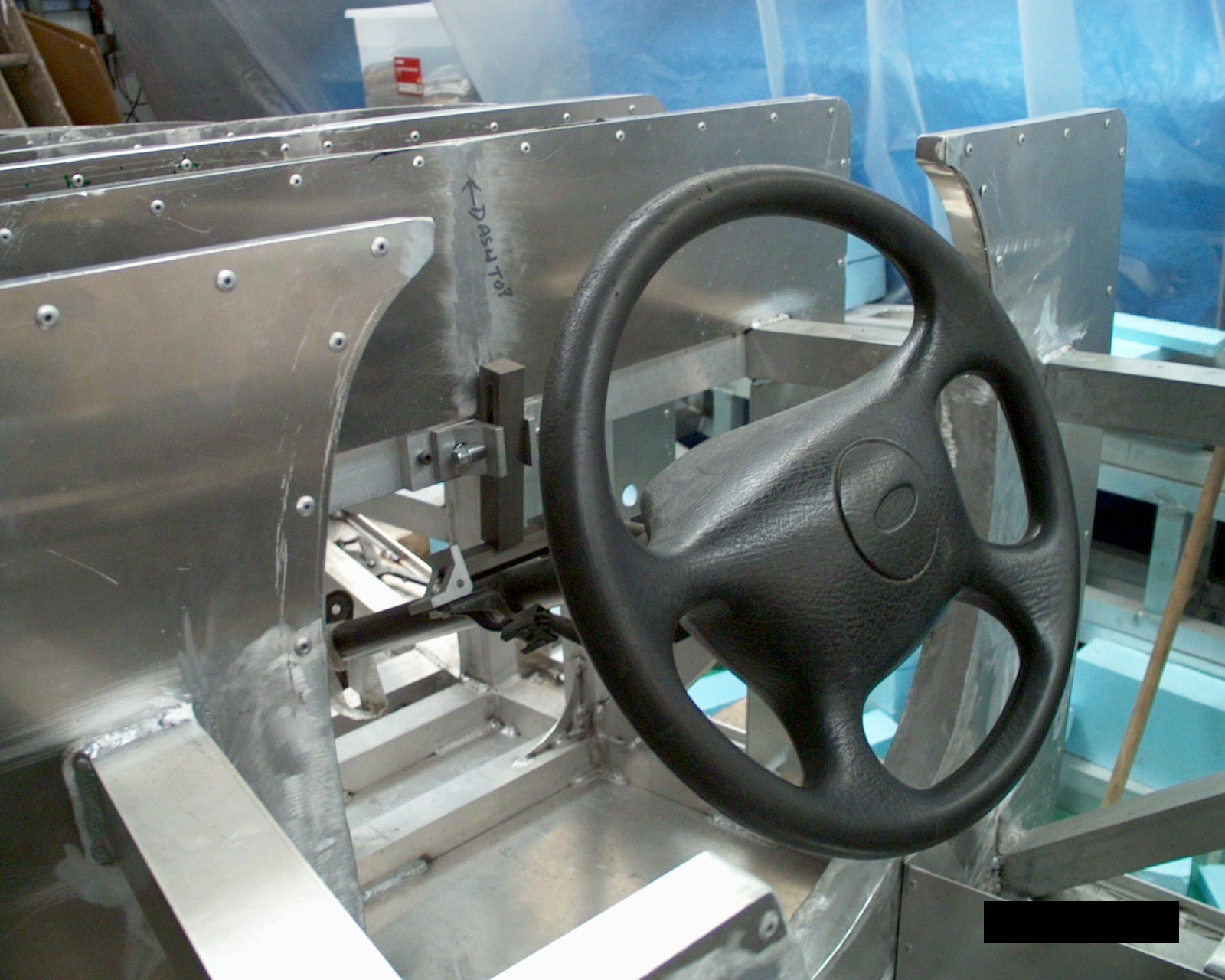
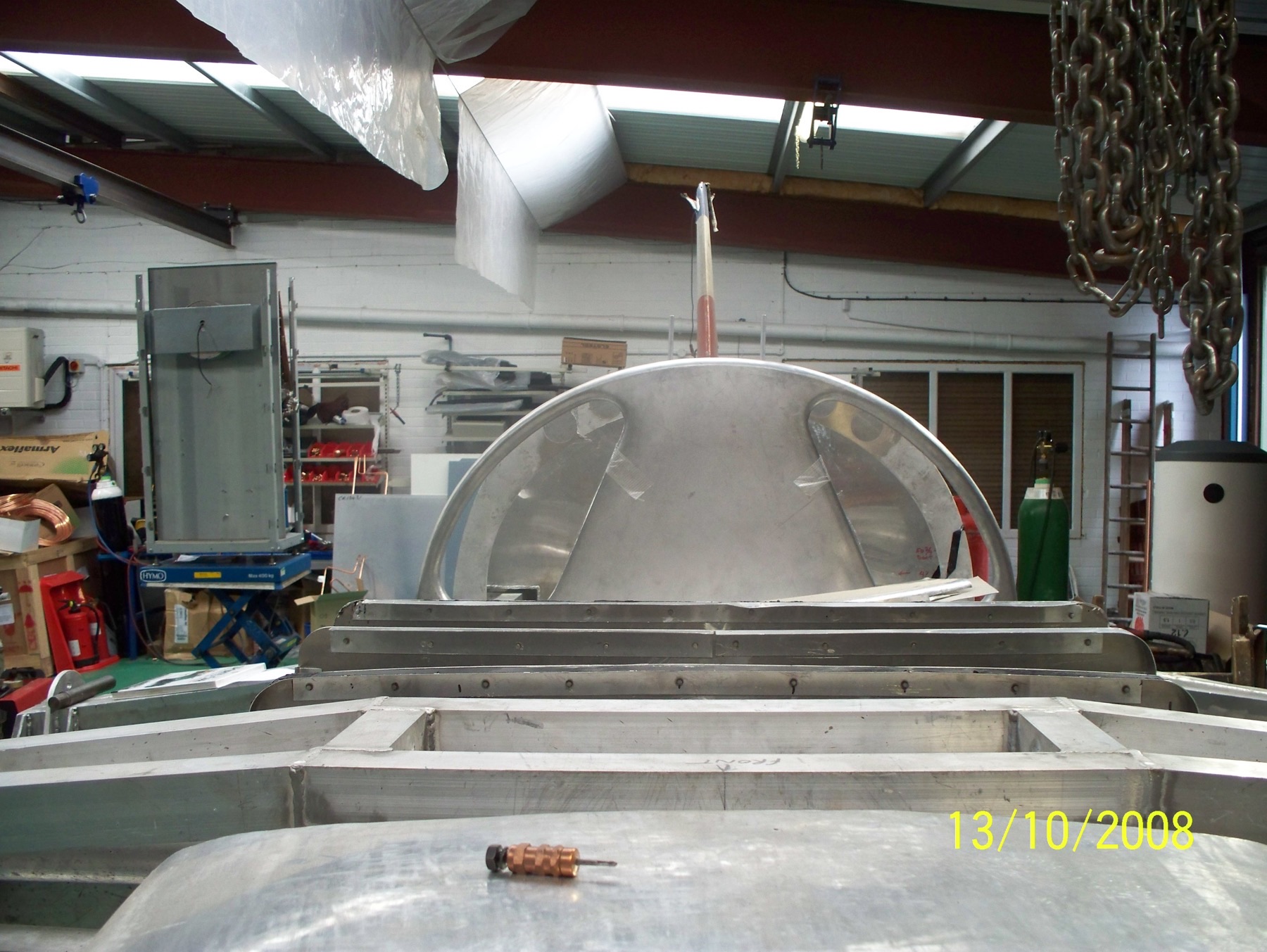
As the build progressed the decision was made by the owners to run K777 at Records Week upon Coniston Water and accordingly in order to be compliant with the rules for that event at that time, a composite safety cell was built by a third party UIM registered cell builder. This safety cell was then fitted into the existing cockpit area once the previous steering and engine throttle arrangement had been stripped out. The following photo shows the date of manufacture of this safety cell being 2009, that being a year after the front of the air intakes had already been formed.
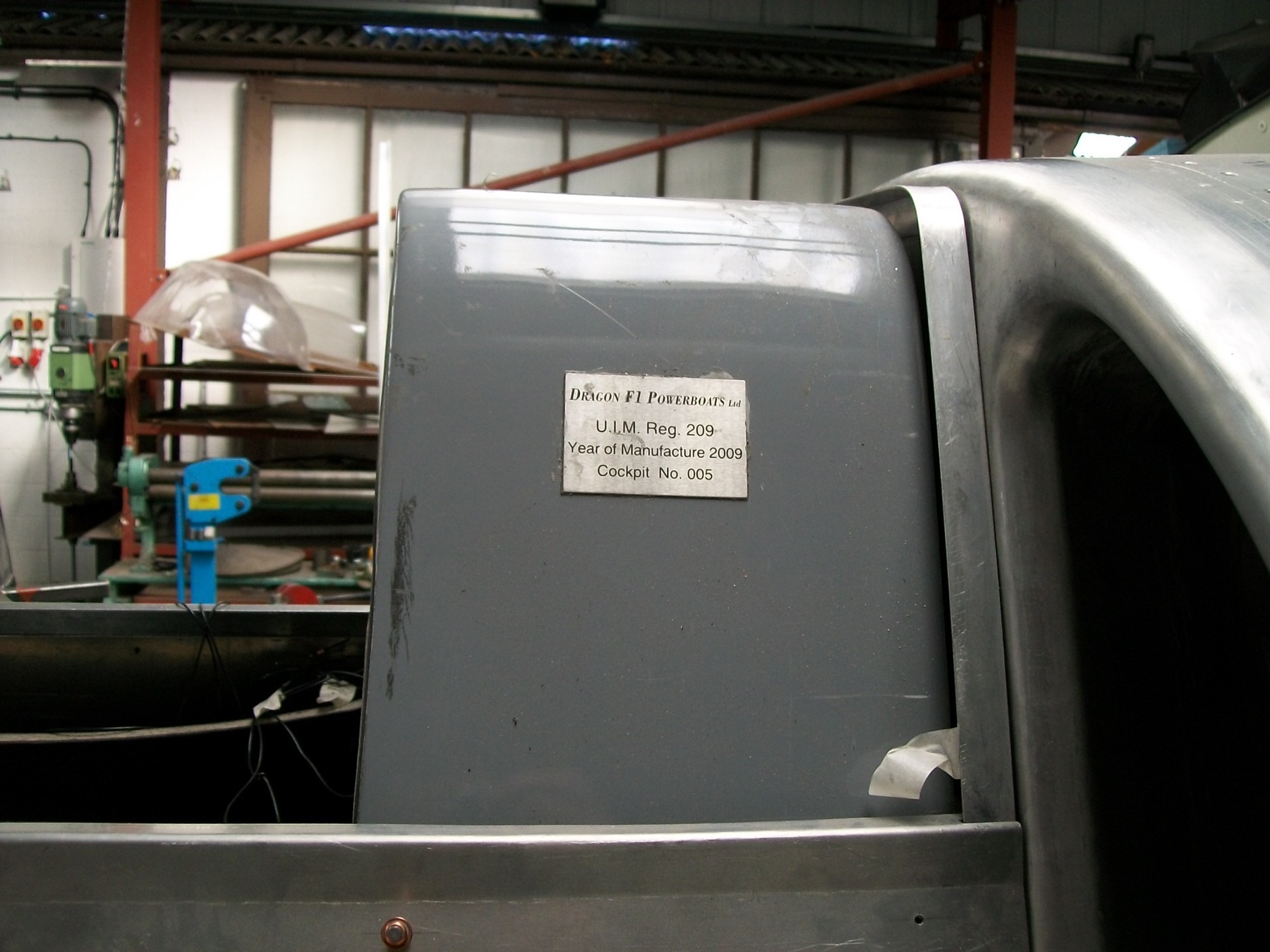
Secondly there was also a suggestion upon the same social media posting that the Orpheus gas turbine powering K777 had suffered a compressor stall and some people may be unsure as to what this means and the symptoms typically associated with it.
As mentioned within our previous diary updates upon our website, the compressor stage to the gas turbine in the case of the Orpheus engine is made up of several stages of fan wheels located at the front of the engine that draw in air as they rotate. Each fan blade is shaped in the form of a little wing and like the wing of a plane there are limits to what it can deal with in respect of the air flowing over it. That is to say the angle of the air meeting that wing and the speed of that air has to be maintained within certain parameters.
As well as the little wings on the rotating fans there are also little wings attached to the outer casing of the compressor stage to the engine and their function is to guide the direction of the air entering the engine so as to be at an acceptable angle when that air meets the rotating compressor blades. On some jet engines these guide vanes to the engine casings can be altered in pitch for different engine speeds and conditions so as to direct the air most effectively towards the rotating compressor fan blades. However in the case of the Orpheus engine these guide vanes are fixed in position making the engine susceptible to certain airflow conditions / rapid throttle inputs that can promote compressor stall and less powerful / efficient than engines with variable pitch guide vanes.
Going back to an aircraft wing if the angle of the wing meeting the oncoming air goes beyond the limits of that wing, then the wing stops creating lift and the aircraft is said to have stalled and the plane will fall out of the sky unless the situation is able to be quickly arrested by the pilot.
Likewise with the small wings that form the compressor blades of the gas turbine, if they are subjected to air at the wrong angle of attack, or to the speed of that air being outside the limits of which they will work, then the result is they will fail to move air through the engine but rather just stir it about. When that happens the compressor of the engine is said to have stalled.
Not surprisingly one of the first things the person in charge of the engine will see on their instruments during a compressor stall is a sharp rise in the exhaust gas temperature (EGT) gauge from the normal running temperature. This being as a direct result of a lack of cooling airflow passing through the engine during a compressor stall. In addition there will usually also be a rapid decline in thrust of the engine during a compressor stall, again notable to the pilot along with vibration.
If a compressor stall is sustained then this can lead to what is known as surging of the jet engine whereby there is a greater pressure inside the engine from combustion than that being produced by the stalled section of the compressor in front of the combustion area. As high pressure moves to low pressure to be in equilibrium then instead of air being sucked by the compressor into the engine, existing high pressure air already inside the engine will flow back out of the engine through a reversal of airflow through the intakes.
As there is typically unburnt fuel mixed with that air now spilling out of the air intake then when it meets an oxygen rich environment outside of the engine it will often spectacularly ignite whilst at the same time extinguishing the flame in the combustion chamber, so you can also get ignition of unburnt fuel occurring out the rear of the engine at the same time. The following video animation simulates the condition of engine surge from compressor stall of the engine from both cockpit and engine behaviour:
The surge event is often cyclical with repeated explosions / bangs as the excess pressure is released, the fuel ignites outside of the engine, the fault builds up again and repeats. Not surprisingly this can lead to damage of the engine since the compressor fan wheel blades (wings) are designed for airflow in only one direction.
When the air intake to the Orpheus engine deformed during testing at Helical Technology premises on 24th November 2011 (of note being a fortnight after the craft was at Coniston Records Week), the late Graham Pool CEng, MIMechE was in attendance monitoring the engine throughout. Graham had a vast amount of experience at Rolls Royce as one of their senior gas turbine engineers and categorically stated to me at the time that the engine had not suffered a compressor stall during that event. This was also confirmed by the lack of engine vibration, there was no loss of performance to the engine and no sudden rise in EGT when the event occurred.
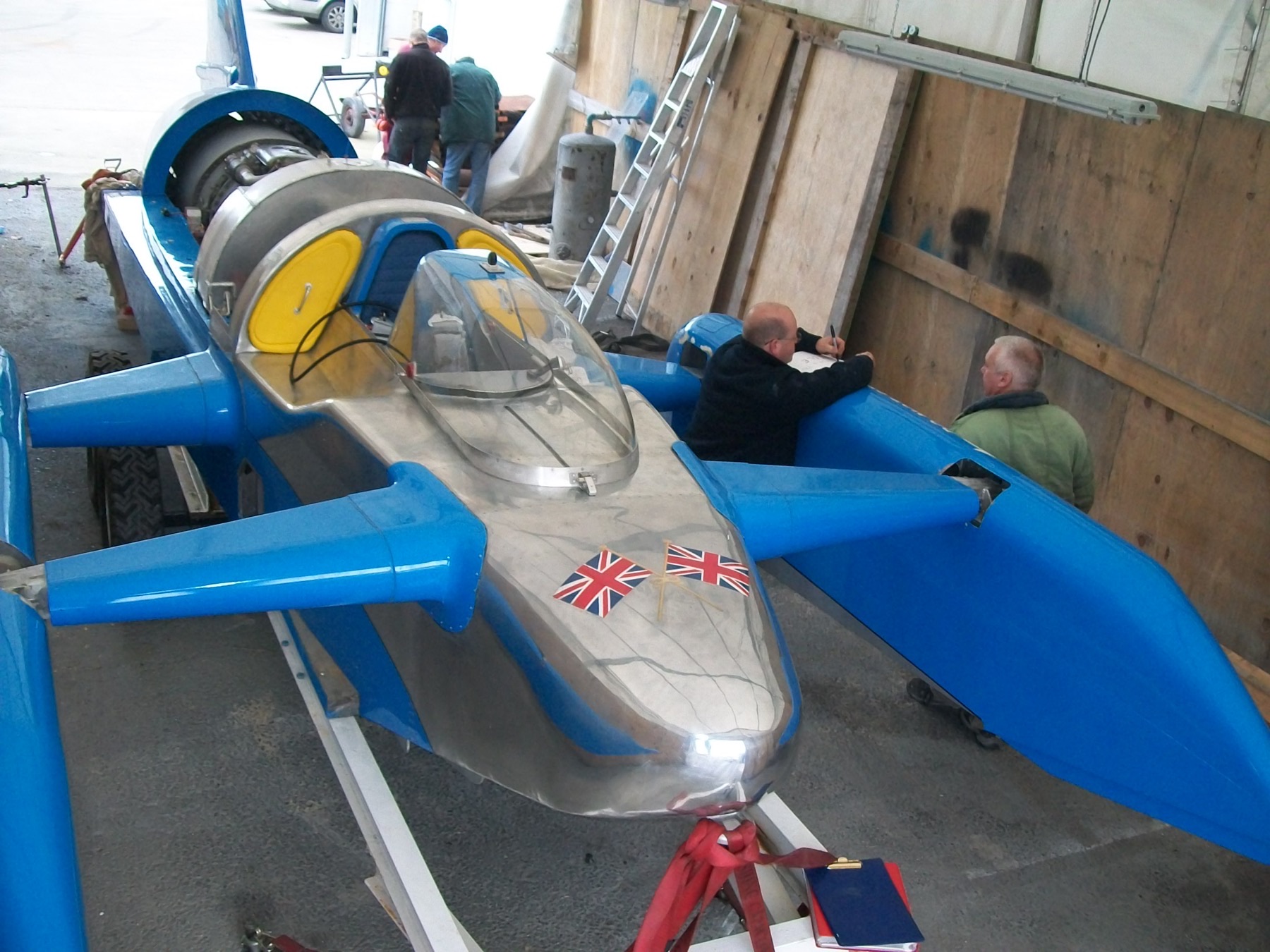
K777 under static engine test at Helical Technology on 24th November 2011
Furthermore I confirm that the Orpheus engine to K777 was run to full power upon several occasions through the air intakes to the craft under static tests without any indication of engine compressor stalling or surge. Following the deforming of the inlet tract under load as mentioned previously the tract was subsequently strengthened in this area with additional aluminium ribs to match those present in other areas of the inlet tract. As a result of that minor strengthening modification no further deformation of the inlet tract occurred during the times I have attended such engine tests.
The above information does not mean to say that the air intakes on this type of craft are not without issues and these can be discussed in a later diary update, rather than the clarification herein that the engine within K777 had not suffered a compressor stall when the intake metalwork partly deformed under load during the test of 24th November 2011.
Moving along this month we were fortunate in being able to attend the first of what will hopefully be a regular event of model boat Regatta at Coniston Water organised by the Ruskin Museum. The event was professionally and entertainingly presented by Andy Kershaw, with special guests Gina daughter of Donald Campbell, singer Sophia Dady with her recently released Bluebird album, along with 8 times world speed record holder Mike Newman despite his blindness disability.
A small area of the lake not too far from the Bluebird cafe was able to be cordoned off that allowed those bringing their superb collection of models to be dynamically displayed as shown in the following video and photos.
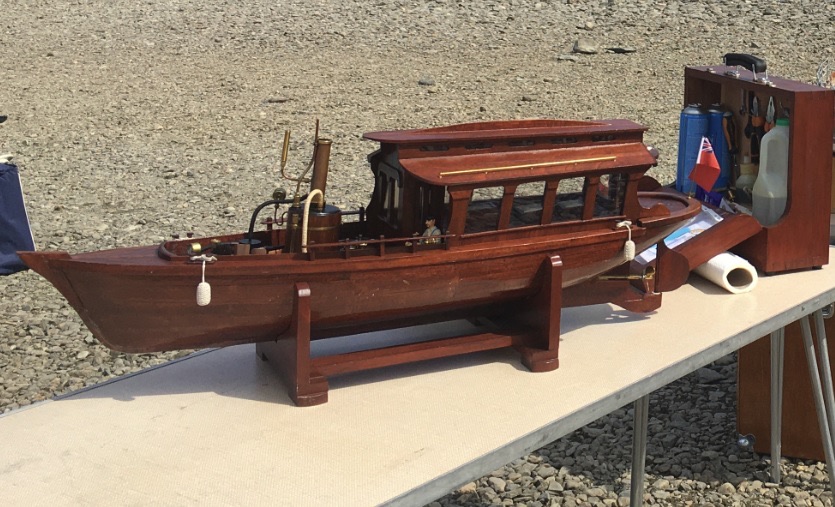
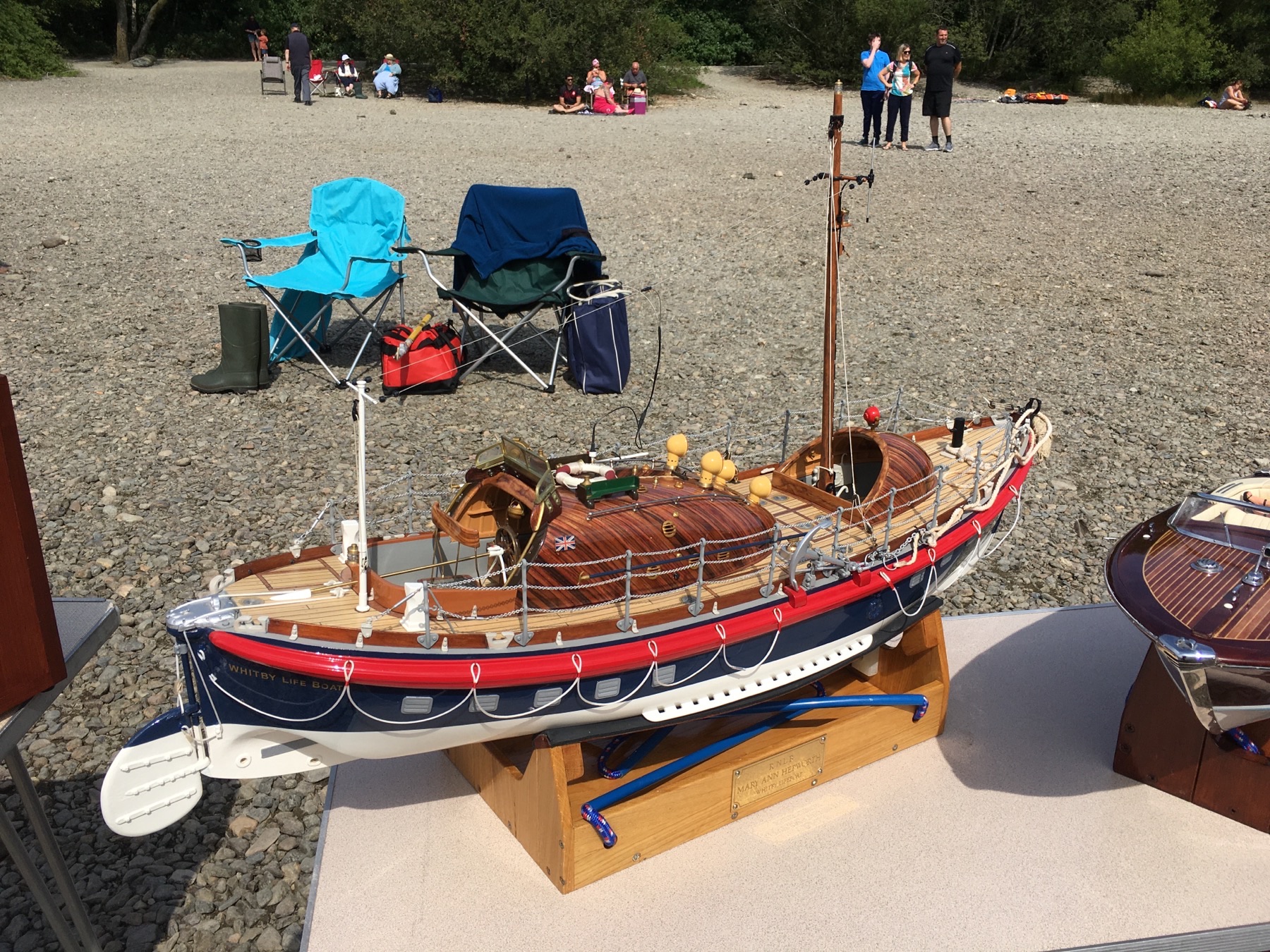
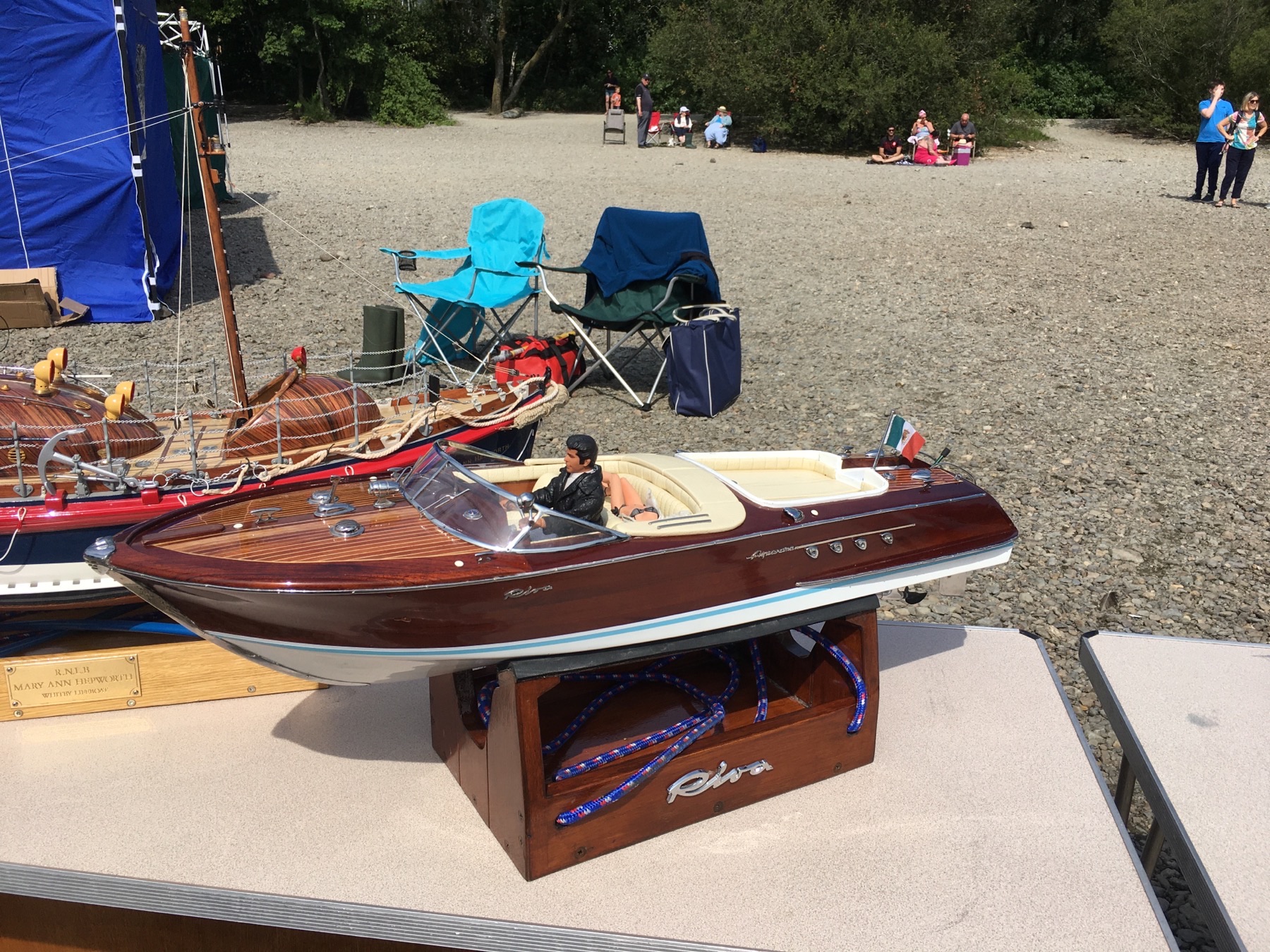
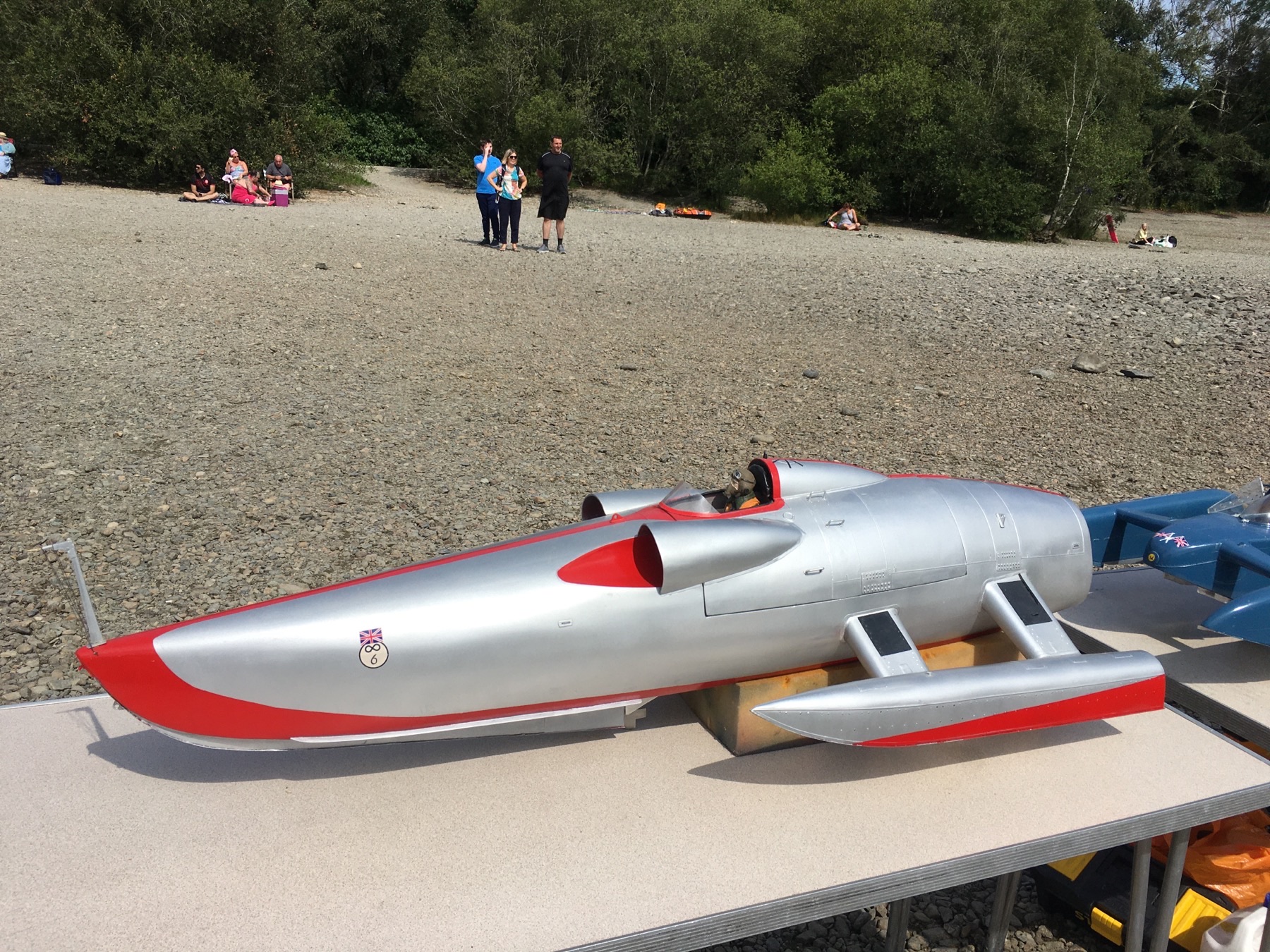
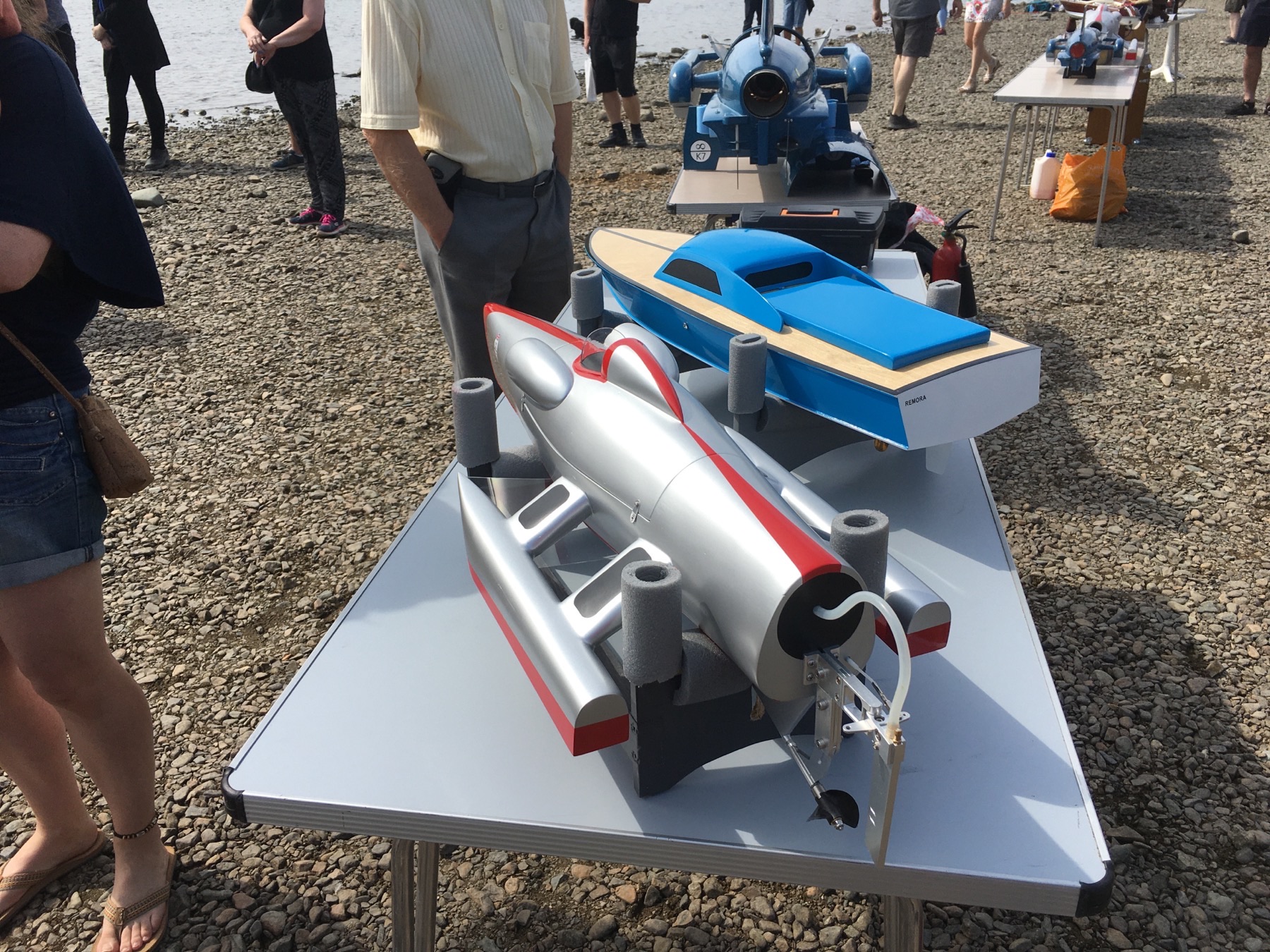
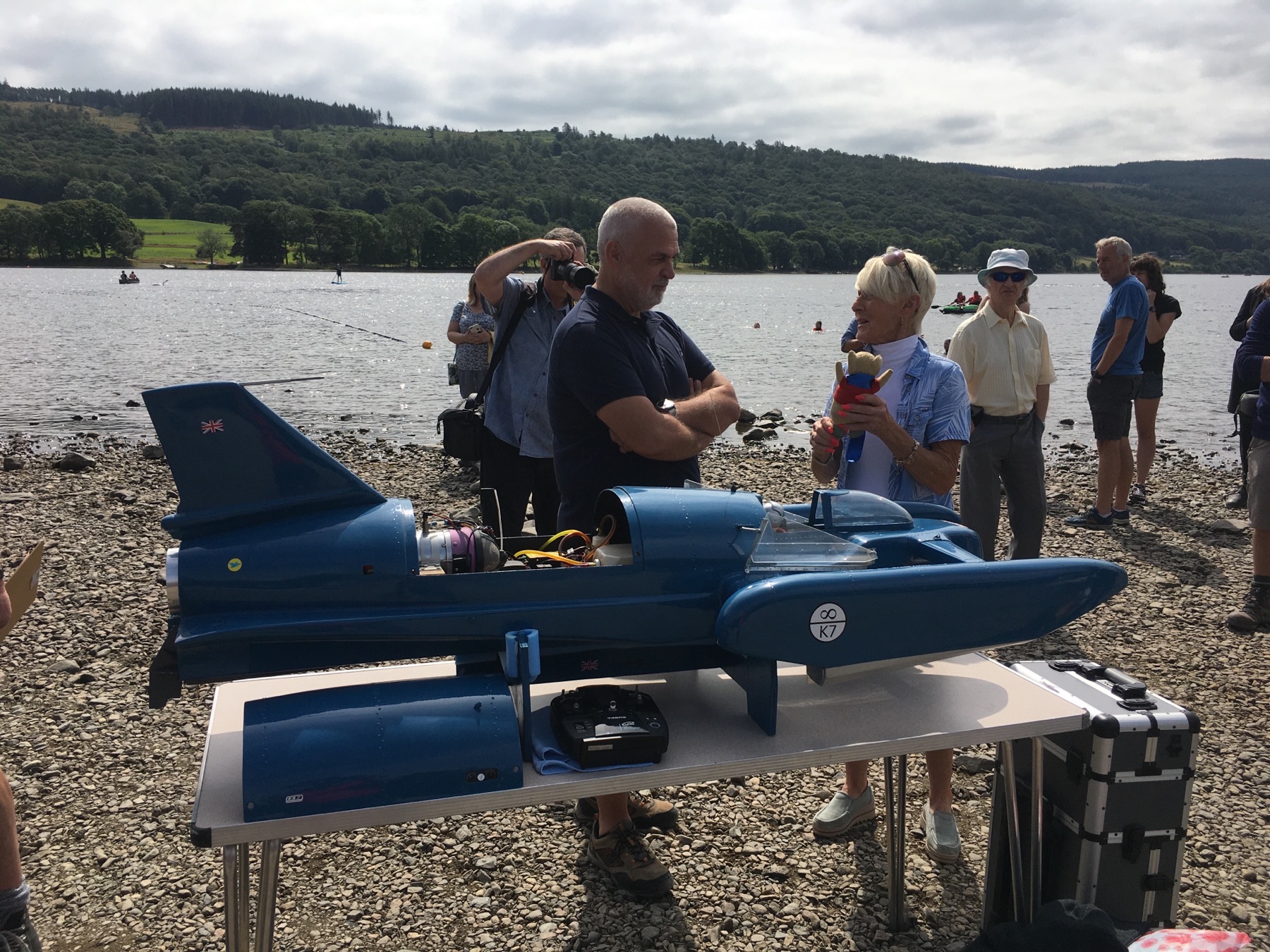
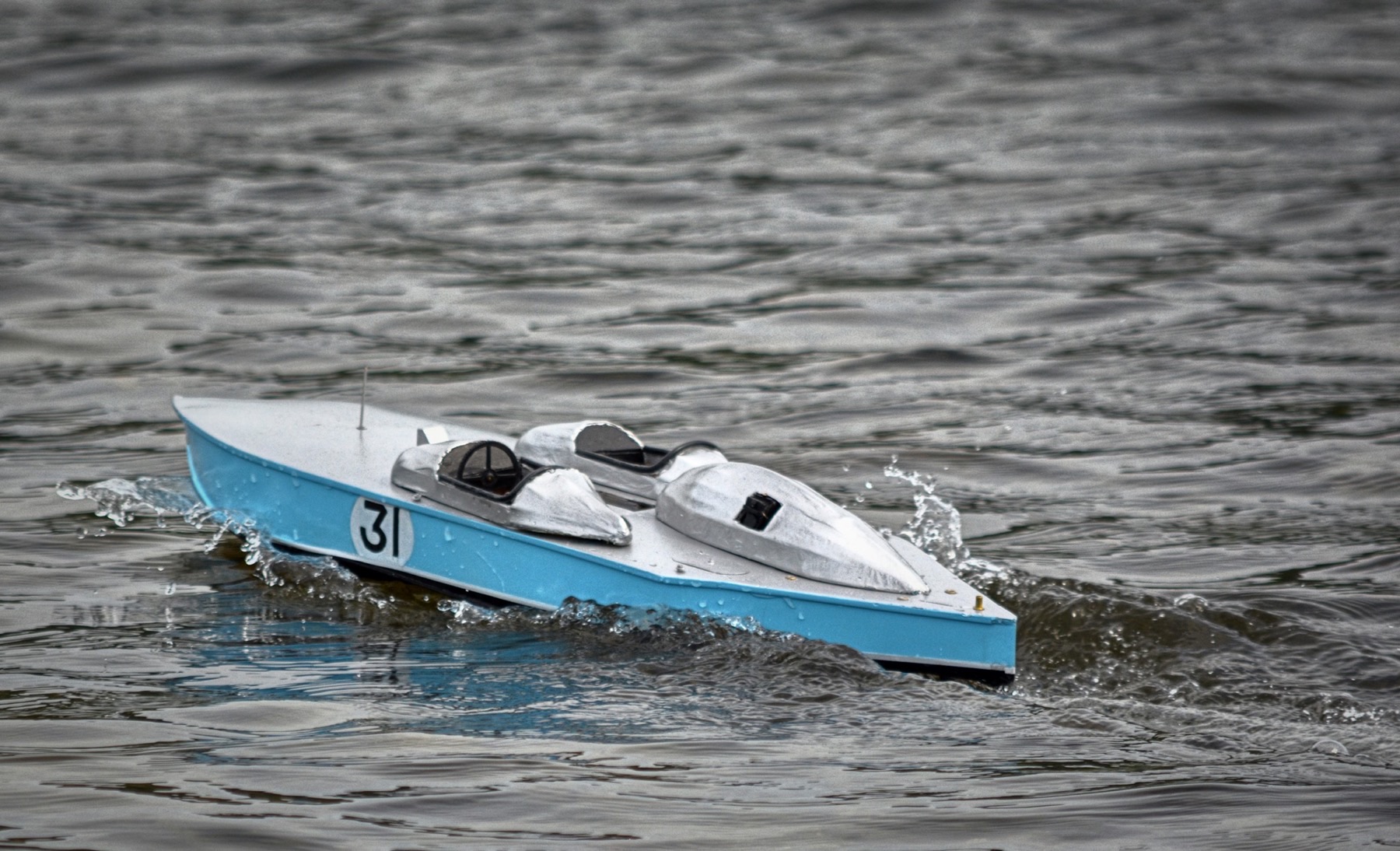
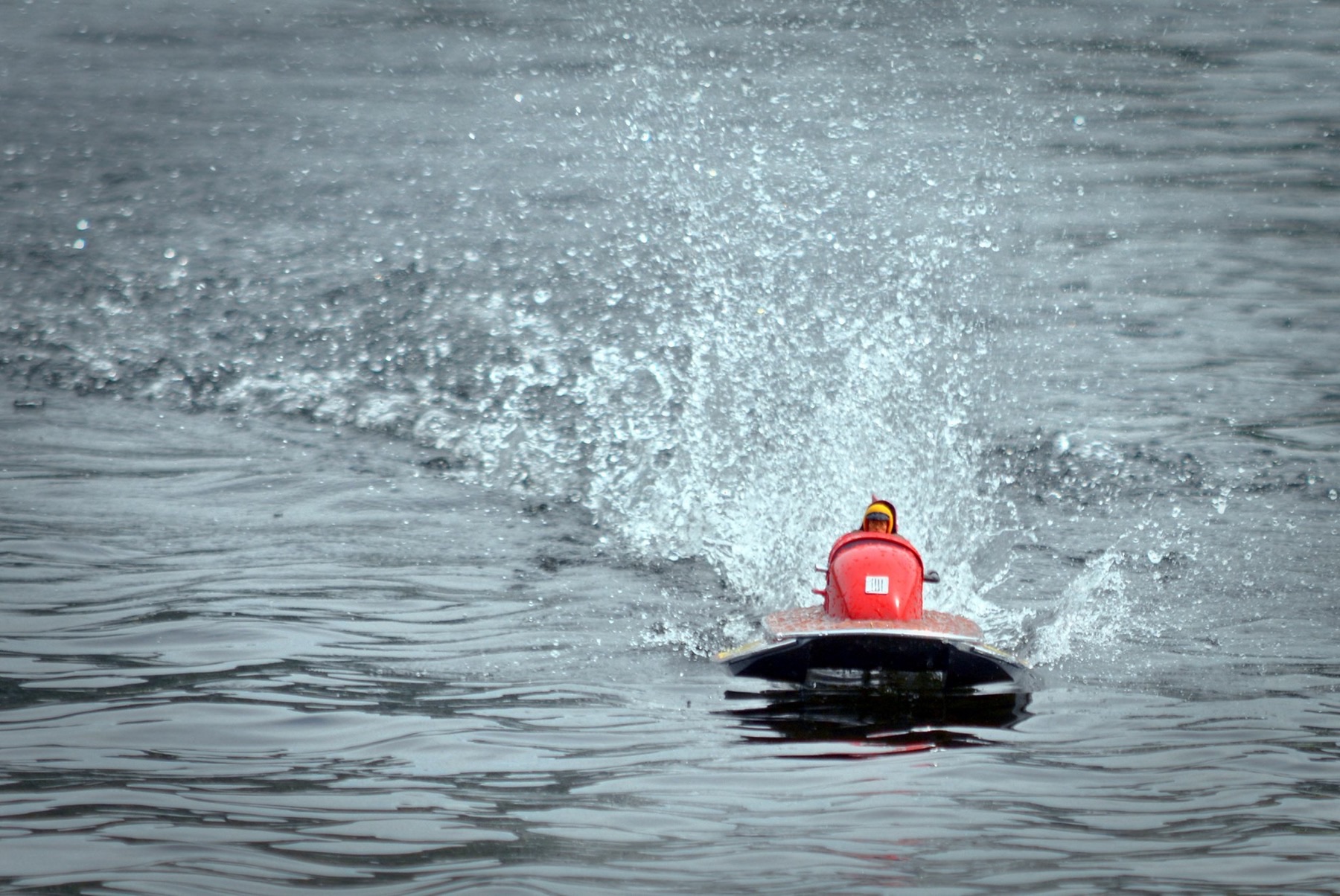
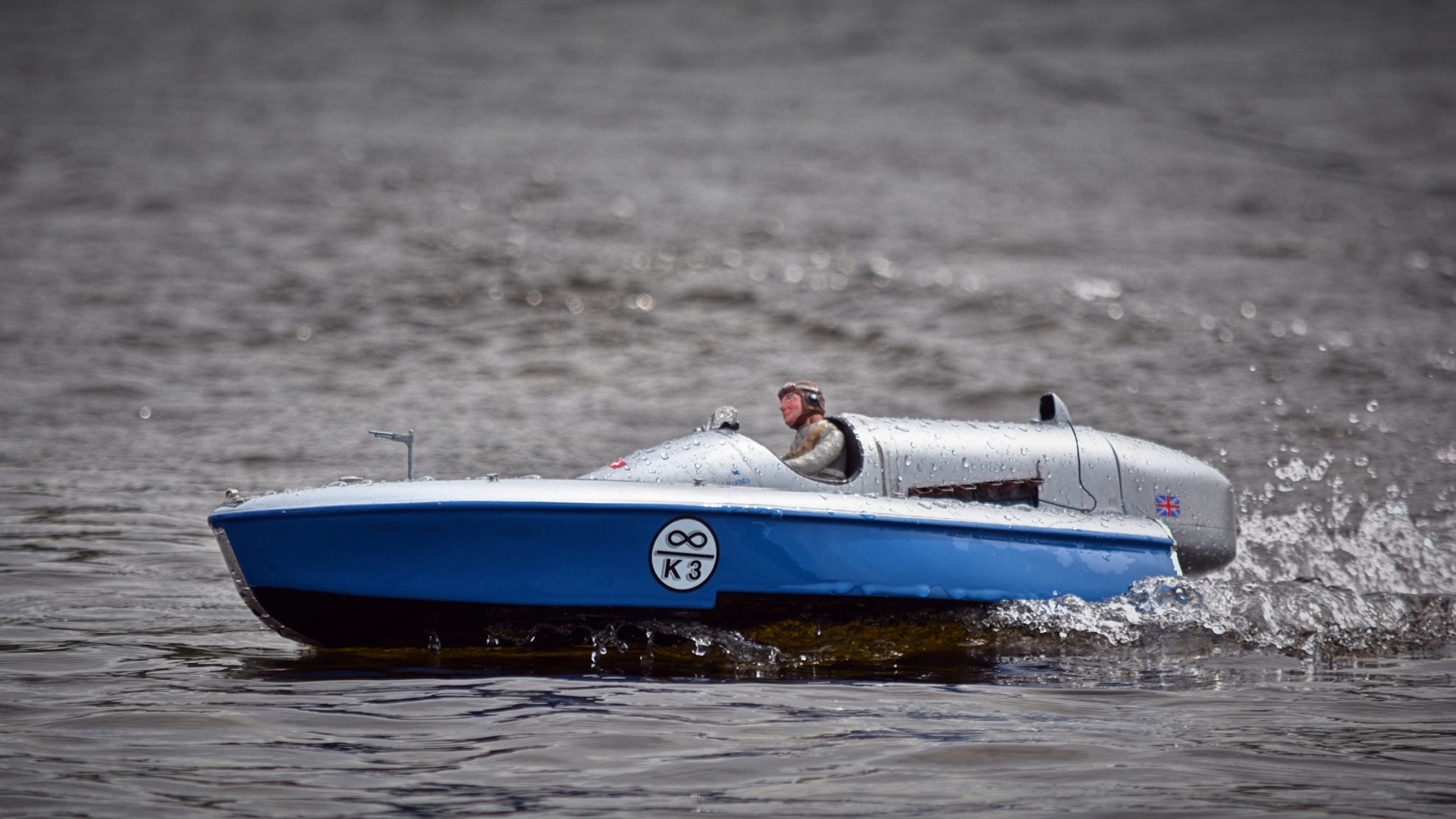
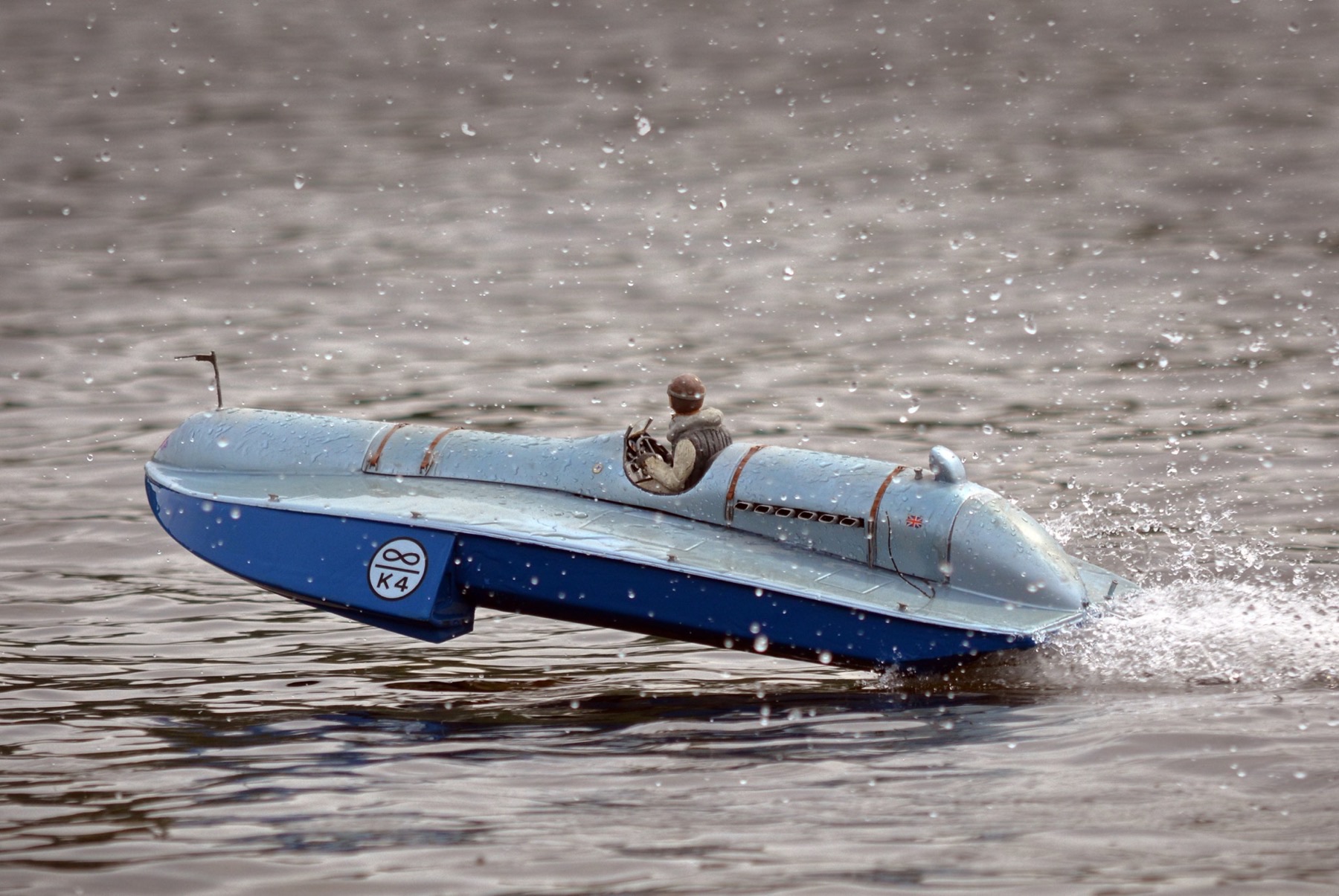
Of those also present a special shout out to Tony Stuchbury for allowing use of his fantastic photos of the models shown out on the water within this update, to Rich Marsh with his superb collection of hydroplanes including White Lady of which the full size craft can be seen at the Windermere Jetty Museum and also to Mick Day with his huge model of Bluebird K7 as shown in the following video of its very loud jet undertaking a test run on the shoreline:
On the return journey to their home in Peterborough Mick and his wife Lesley kindly took time out to visit us, have a brew and see Longbow which was great to talk over aspects of the craft compared with his model. Also at the Regatta I was pleased at last to meet up with Vince Green who has the most extensive and detailed collection of land and water speed record models I could ever wish for.
Well that is all the news that I have for you this month folks. Please drop by towards the end of August for the next diary update of the venture and if you have not done so yet then please take a moment to like our Facebook page as a means of keeping in touch with our little project.
